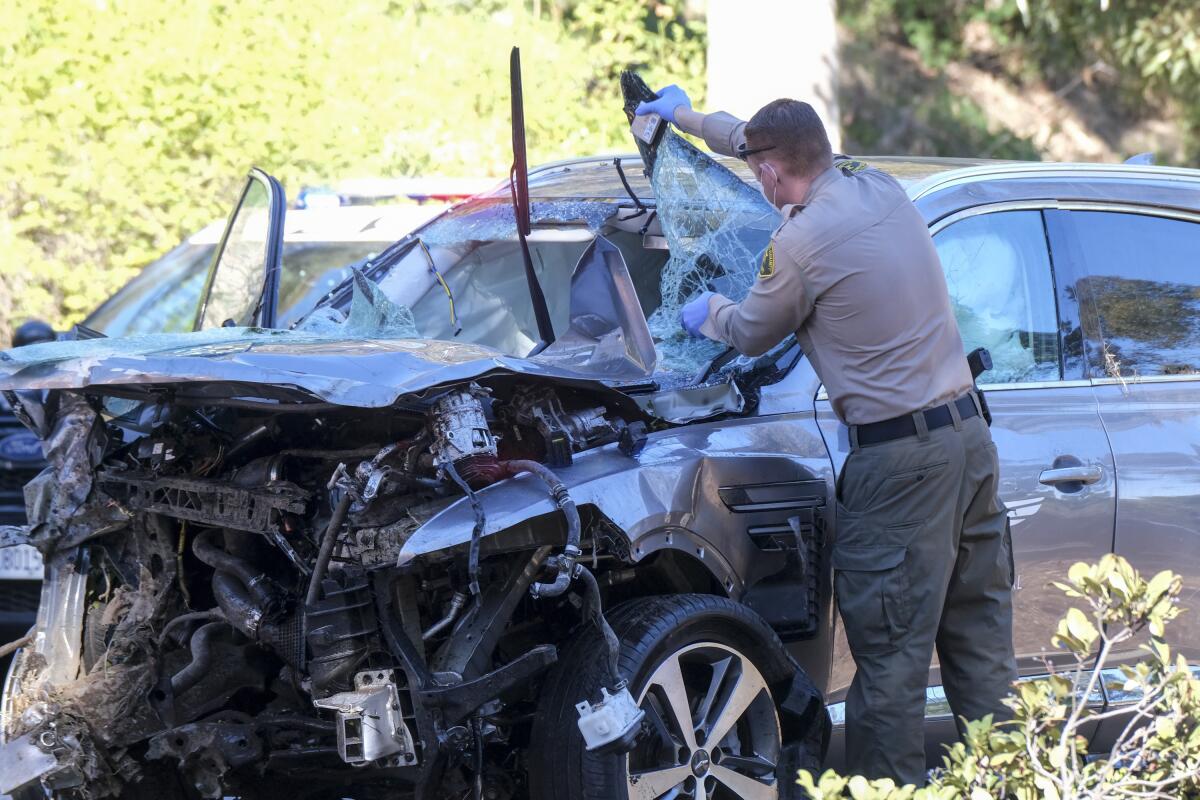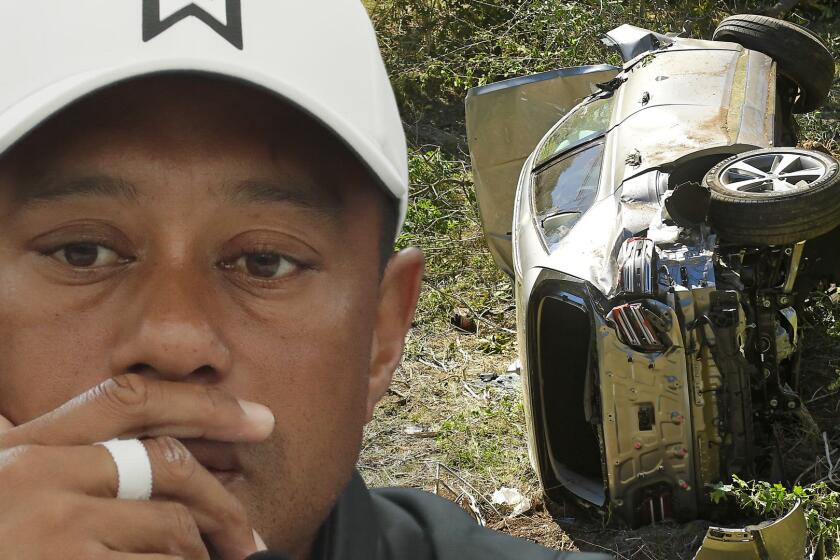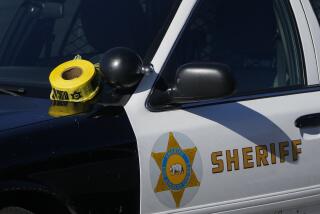Empty, unlabeled pill bottle found in Tiger Woods’ backpack but was deemed irrelevant to crash

A Los Angeles County sheriff’s deputy found an empty, unlabeled pill bottle in a backpack next to Tiger Woods’ crashed SUV as he inventoried the scene. That same investigator said he had found no evidence the golf legend was under the influence at the time of the Feb. 23 crash but, rather, was in shock, according to a crash scene investigation report.
The 22-page sheriff’s report reveals that in the aftermath of the crash — which occurred after Woods was traveling at speeds of up to 87 mph on a roadway with a posted speed limit of 45 mph — Woods was so disoriented he thought he was in Florida, and paramedics found his blood pressure so low they could not administer pain medication, the report said.
Sheriff Alex Villanueva on Wednesday declared that excessive speed and an inability to negotiate the curve of the roadway were behind the crash, and said the department did not find any probable cause to test Woods for being under the influence.
Deputy Carlos Gonzalez, who was first at the scene, reported to the lead investigator that he did not smell alcohol and that Woods’ eyes were not watery nor his speech slurred. Gonzalez reported that, after the seriously injured Woods was removed from the SUV, the deputy found a backpack next to the vehicle, and in the front pocket was the empty pill bottle.
“The container had no label and there was no indication as to what, if anything, had been inside. There was no open intoxicants, or paraphernalia inside the vehicle,” the report written by Deputy Justin Smith noted.
The sheriff on Thursday said that the empty pill bottle “held no evidentiary value.”
Woods had the borrowed vehicle for more than a week. He was in the L.A. area for the Genesis Invitational golf tournament from Feb. 18-21, and on the morning of the Feb. 23 crash was on his way to the Rolling Hills Country Club for a film shoot after spending the night at the Terranea Resort in nearby Rancho Palos Verdes.
As Woods traveled north on Hawthorne Boulevard around 7:12 a.m., he hit the median, then a Rolling Hills sign and then the west curb before striking a tree 71 feet off the roadway. He suffered serious ankle and leg injuries, which could threaten his playing career.
On Wednesday, before the report became public, Sheriff’s Capt. James Powers told reporters, “There was no evidence of any impairment. There was no odor of alcohol. There are no open containers in the vehicle and no narcotics or any evidence of medication in the vehicle or on his person.” He said, because of that, investigators did not have probable cause to obtain a search warrant for blood draws that were taken after Woods was hospitalized.
Tiger Woods was driving nearly twice the posted speed limit before he crashed on the Palos Verdes Peninsula in February, the Los Angeles County sheriff says.
An investigator seeking to determine whether Woods had been impaired questioned the L.A. County fire captain who helped rescue him. The captain said that Woods’ pupils did not show signs of narcotics, but that his blood pressure was so low they could not initially give the golfer pain medication. The captain told the investigator Woods’ vital signs were consistent with shock and that once in the ambulance he was given 4 milligrams of morphine and medication to ease nausea.
According to a deputy who interviewed Woods at the hospital, he saw no signs that the golfer had consumed alcohol or was under the influence of any substance and that, despite his injuries, he was quick to answer questions.
Powers has said that Woods, in the interview, indicated he had not consumed any drugs or medications at the time of the crash.
Investigators say the SUV’s data systems determined Tiger Woods reached speeds of up to 87 mph around the time of his crash in Rolling Hills Estates.
Woods, in a statement released Wednesday, said he is focusing on his “recovery and family” after the Sheriff’s Department closed the investigation into his crash, and added he was grateful to the good Samaritans and authorities who helped him at the scene.
More to Read
Sign up for Essential California
The most important California stories and recommendations in your inbox every morning.
You may occasionally receive promotional content from the Los Angeles Times.











